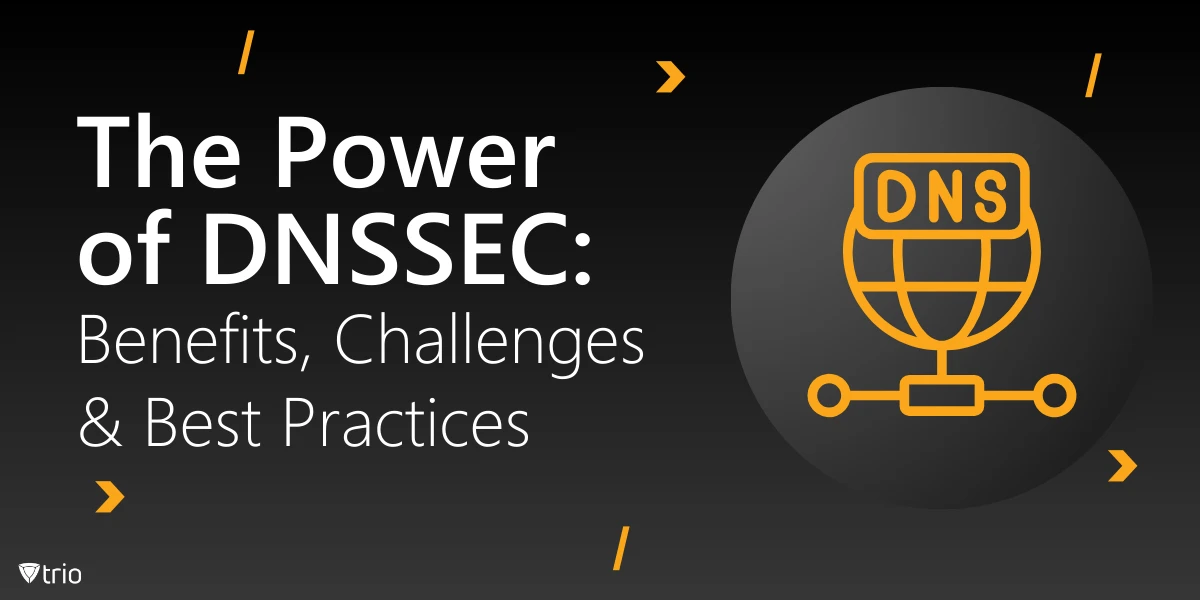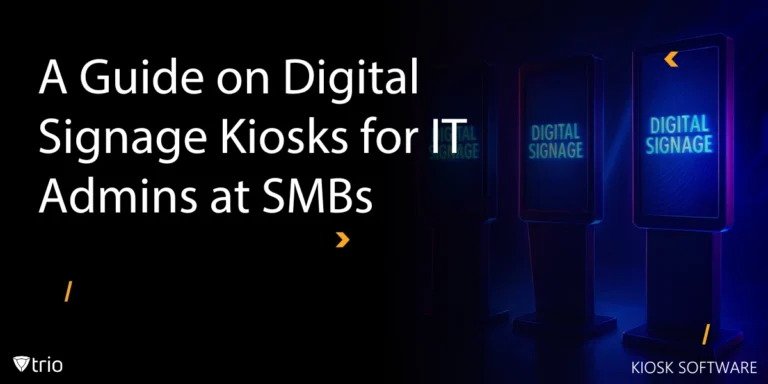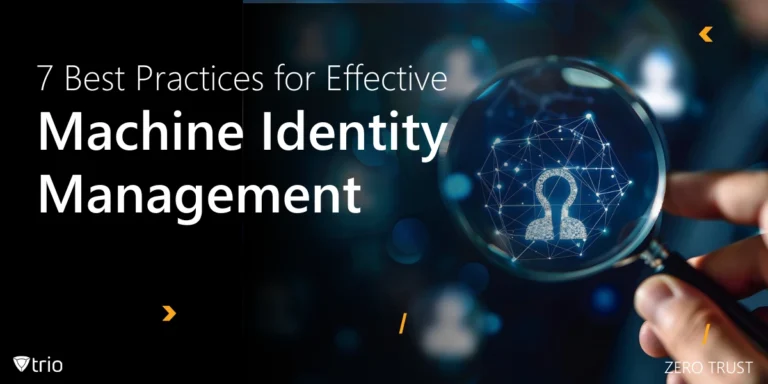Nowadays the internet serves as the backbone for most modern enterprises, which makes securing the Domain Name System (DNS) more critical than ever. For instance, the 2021 SolarWinds cyberattack highlighted how vulnerabilities in foundational internet protocols, including DNS, can be exploited to devastating effect, underscoring the urgent need for robust DNS security measures. DNSSEC, or Domain Name System Security Extensions, is a solution designed to address vulnerabilities within the DNS infrastructure, such as DNS spoofing and man-in-the-middle attacks, which can redirect users to malicious websites or compromise sensitive data. What are the tangible benefits of DNSSEC, and why does its implementation matter more than ever in the wake of growing security threats? As recent high-profile breaches have shown, ensuring a secure DNS infrastructure is not just important—it’s essential. This blog will explore DNSSEC benefits, its challenges, and its significance in protecting the DNS infrastructure against cyber threats.
What is DNS?
The Domain Name System (DNS) is often referred to as the phonebook of the internet. It translates human-readable domain names, such as example.com, into machine-readable IP addresses, like 192.168.1.1. This functionality is crucial for internet operations, enabling users to access websites, email services, and other online resources seamlessly. Without DNS, navigating the internet as we know it would be virtually impossible.
DNS Vulnerabilities
Despite its fundamental role, DNS was not initially designed with security in mind. This has left it vulnerable to several types of attacks. DNS spoofing, also known as cache poisoning, is one such attack where malicious actors manipulate DNS records, redirecting users to fraudulent websites. These attacks can lead to phishing scams, malware infections, and data theft. Another common vulnerability is DNS-based man-in-the-middle attacks, where attackers intercept and alter DNS responses to compromise sensitive data. Compromised DNS servers can also result in data breaches, exposing private information and disrupting operations.
What Is DNSSEC and Why Is It Important?
DNS Security Extensions (DNSSEC) is a suite of security protocols designed to address the inherent vulnerabilities of DNS. By adding a layer of authentication and integrity checks to DNS responses, DNSSEC mitigates the risk of spoofing and other DNS-based attacks. To properly manage and secure your DNS infrastructure, integrating DNSSEC with effective server security best practices is essential. For instance, server management tools allow IT teams to configure and monitor DNSSEC settings across their networks to ensure the integrity of the DNS infrastructure is maintained.
What Does DNSSEC Aim to Prevent?
DNSSEC (Domain Name System Security Extensions) aims to prevent various types of attacks targeting the DNS infrastructure. Its primary goal is to protect against DNS spoofing or cache poisoning, where attackers manipulate DNS records to redirect users to malicious websites. By adding cryptographic signatures to DNS responses, DNSSEC ensures data integrity and authenticity, making it more difficult for attackers to alter DNS information. Moreover, DNSSEC's protection can be integrated with centralized cloud server management solutions to streamline the configuration and ongoing monitoring of DNS security across distributed environments, especially for organizations with a multi-cloud infrastructure.
DNSSEC Validation
When a DNS resolver receives a response, it uses DNSSEC to validate the digital signatures attached to the DNS records. This validation process relies on a "chain of trust," where each level of the DNS hierarchy—from root servers to top-level domains and individual domain names—is verified against established trust anchors. For organizations relying on LDAP or Active Directory for user authentication, integrating DNSSEC with these systems ensures that authentication queries and data exchanged through these directories are not vulnerable to DNS-based attacks. This integration adds another layer of security for sensitive systems relying on LDAP or Active Directory configurations to manage identity and access control.

Key Benefits of DNSSEC
To fully understand the advantages of DNSSEC, let’s explore how it strengthens DNS infrastructure against threats while enhancing user trust and business resilience.
Data Integrity
One of the primary benefits of DNSSEC is its ability to maintain data integrity. By digitally signing DNS records with cryptographic algorithms, DNSSEC ensures that DNS responses are not altered in transit. This means that users can trust they are being directed to the correct servers, free from interference or manipulation. This layer of protection is particularly important in preventing attackers from redirecting traffic to malicious sites.
Authentication
DNSSEC enhances the security of the DNS by enabling the verification of the origin of DNS data. This prevents spoofing attacks by ensuring that DNS responses come from authoritative servers rather than malicious intermediaries. By adding this layer of authentication, DNSSEC strengthens trust in the DNS infrastructure and helps protect users from phishing scams and other fraudulent activities.
Improved Security Posture
For organizations, implementing DNSSEC significantly enhances their overall security posture. It reduces the risk of phishing attacks, malware infections, and data breaches, which are often facilitated through DNS vulnerabilities. DNSSEC acts as a critical component in a multi-layered security strategy, providing an additional line of defense against evolving cyber threats.
Increased User Trust
DNSSEC fosters greater user confidence in online interactions. With DNSSEC in place, users can trust that they are accessing legitimate websites and services, reducing the risk of being redirected to malicious sites or unintentionally downloading malware. This increased trust is vital for businesses, as it strengthens relationships with customers and partners in the digital realm.
Compliance with Security Standards
Many regulatory frameworks and security standards, including PCI DSS and HIPAA, either require or recommend the implementation of DNSSEC. By adopting DNSSEC, organizations can meet these compliance requirements, thereby avoiding potential fines and penalties. Additionally, compliance demonstrates a commitment to security, which can enhance an organization’s reputation.
Enhanced Business Continuity
DNSSEC contributes to business continuity by ensuring the reliability and availability of critical online services. DNS attacks can disrupt operations and result in significant financial losses. By protecting against these attacks, DNSSEC helps organizations maintain seamless operations and supports a more resilient IT infrastructure.
What Are the Disadvantages of DNSSEC?
While DNSSEC offers significant security benefits, it also comes with some disadvantages. One of the main challenges is the complexity of implementation, which can require specialized technical knowledge and additional configuration to ensure proper deployment. DNSSEC can also introduce slight delays in DNS resolution times due to the added cryptographic verification process, potentially affecting performance. Additionally, DNSSEC's reliance on public key infrastructure (PKI) means that key management becomes critical, as lost or expired keys can lead to service disruptions. Furthermore, not all DNS resolvers and systems support DNSSEC, which can create compatibility issues, limiting its effectiveness. Finally, DNSSEC does not protect against all types of DNS attacks, such as DDoS attacks, leaving other security measures necessary to provide full protection.
Deploying DNSSEC
Implementing DNSSEC can seem daunting at first, but with the right plan and tools, it becomes a manageable process. Below, we outline the essential steps to enable DNSSEC effectively. Deploying DNSSEC requires careful planning and execution.
- The first step is to assess the existing DNS infrastructure to ensure compatibility with DNSSEC protocols.
- Once compatibility is confirmed, organizations can enable DNSSEC on their authoritative name servers by configuring DNS zones with cryptographic keys.
- After implementation, it’s crucial to test and validate the setup to ensure that DNSSEC functions as expected.
Ongoing monitoring and maintenance, including regular updates to cryptographic keys, are essential to sustain DNSSEC’s effectiveness.
Challenges of DNSSEC Deployment
While DNSSEC offers significant security benefits, its deployment is not without challenges. Configuring DNSSEC can be complex, requiring technical expertise and careful management of cryptographic keys. Additionally, DNSSEC validation may introduce slight delays in DNS responses, which could impact performance. Compatibility issues can also arise, as not all DNS resolvers and operating systems support DNSSEC by default. Overcoming these challenges requires a strategic approach and suited support tools.

Trio and DNSSEC Benefits
As a comprehensive Mobile Device Management (MDM) solution, Trio extends its capabilities to simplify DNSSEC adoption and management. Trio addresses the challenges of DNSSEC deployment by offering tools that streamline implementation and enhance monitoring. With Trio’s remote server management services, IT professionals can efficiently configure and oversee DNSSEC settings across their infrastructure.
Addressing DNSSEC Challenges
Trio’s platform simplifies the complexity of DNSSEC configuration by providing intuitive tools and automated workflows. It also offers real-time monitoring and alerting features to ensure that DNSSEC-enabled systems remain operational and secure. This proactive approach reduces the risk of misconfigurations and downtime.
Trio Features Relevant to DNSSEC
Trio enhances DNS security by integrating features such as device security, data encryption, and remote management. These capabilities protect devices from DNS-based attacks and ensure secure communication within the DNS infrastructure. Trio’s remote management functionality allows IT administrators to configure and monitor DNSSEC settings from anywhere, providing flexibility and convenience.
Benefits of Using Trio
Organizations that adopt Trio benefit from an improved security posture. Trio’s efficient management tools save time and resources, enabling IT teams to focus on other critical tasks. Additionally, by reducing DNS-related incidents, Trio helps organizations cut costs associated with troubleshooting and downtime.
Schedule a free demo of Trio today and discover how we can help you master DNSSEC and secure your IT environment effectively.
Conclusion
DNSSEC is a critical enhancement to the DNS infrastructure, addressing longstanding vulnerabilities and providing robust protection against cyber threats. By ensuring data integrity, authentication, and compliance, DNSSEC plays a vital role in securing the digital landscape. While challenges in deployment exist, solutions like Trio simplify the process, making DNSSEC accessible to organizations of all sizes.
For IT professionals, adopting DNSSEC is not just a best practice but a necessity in today’s threat landscape. By incorporating DNSSEC into your cybersecurity strategy, you can protect your organization’s online presence and build greater trust with users. Take the first step today and make DNSSEC a cornerstone of your IT security framework.
Get Ahead of the Curve
Every organization today needs a solution to automate time-consuming tasks and strengthen security.
Without the right tools, manual processes drain resources and leave gaps in protection. Trio MDM is designed to solve this problem, automating key tasks, boosting security, and ensuring compliance with ease.
Don't let inefficiencies hold you back. Learn how Trio MDM can revolutionize your IT operations or request a free trial today!





